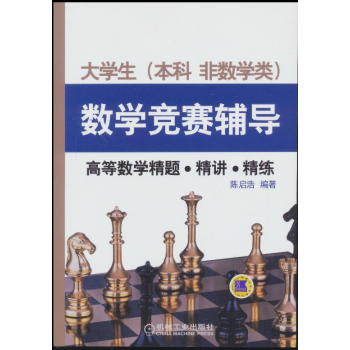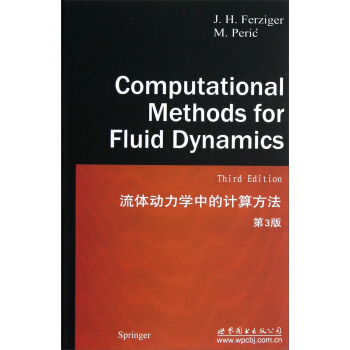

具體描述
內容簡介
弗茲格編著的《流體動力學中的計算方法(第3版)》內容介紹:Computational fluid dynamics, commonly known by the acronym‘CFD’,is undergoing significant expansion in terms of both the number of courses offered at universities and the number of researchers active in the field. There are a number of software packages available that solve fluid flow problems; the market is not quite as large as the one for structural mechanics codes, in which finite element methods are well established. The lag can be explained by the [act that CFD problems are, in general, more difficult to solve. However, CFD codes are slowly being accepted as design tools by industrial users. At present,users of CFD need to be fairly knowledgeable, which requires education of both students and working engineers. The present book is an attempt to fill this need.目錄
Preface1.Basic Concepts of Fluid Flow
1.1 Introduction
1.2 Conservation Principles
1.3 Mass Conservation
1.4 Momentum Conservation
1.5 Conservation of Scalar Quantities
1.6 Dimensionless Form of Equations
1.7 Simplified Mathematical Models
1.7.1 Incompressible Flow
1.7.2 Inviscid (Euler) Flow
1.7.3 Potential Flow
1.7.4 Creeping (Stokes) Flow
1.7.5 Boussinesq Approximation
1.7.6 Boundary Layer Approximation
1.7.7 Modeling of Complex Flow Phenomena
1.8 Mathematical Classification of Flows
1.8.1 Hyperbolic Plows
1.8.2 Parabolic Flows
1.8.3 Elliptic Flows
1.8.4 Mixed Flow Types
1.9 Plan of This Book
2.Introduction to Numerical Methods
2.1 Approaches to Fluid Dynamical Problems
2.2 What is CFD?
2.3 Possibilities and Limitations of Numerical Methods
2.4 Components of a Numerical Solution Method
2.4.1 Mathematical Model
2.4.2 Discretization Method
2.4.3 Coordinate and Basis Vector Systems
2.4.4 Numerical Grid
2.4.5 Finite Approximations
2.4.6 Solution Method
2.4.7 Convergence Criteria
2.5 Properties of Numerical Solution Methods
2.5.1 Consistency
2.5.2 Stability
2.5.3 Convergence
2.5.4 Conservation
2.5.5 Boundedness
2.5.6 Realizability
2.5.7 Accuracy
2.6 Discretization Approaches
2.6.1 Finite Difference Method
2.6.2 Finite Volume Method
2.6.3 Finite Element Method
3.Finite Difference Methods
3.1 Introduction
3.2 Basic Concept
3.3 Approximation of the First Derivative
3.3.1 Taylor Series Expansion
3.3.2 Polynomial Fitting
3.3.3 Compact Schemes
3.3.4 Non-Uniform Grids
3.4 Approximation of the Second Derivative
3.5 Approximation of Mixed Derivatives
3.6 Approximation of Other Terms
3.7 Implementation of Boundary Conditions
3.8 The Algebraic Equation System
3.9 Discretization Errors
3.10 An Introduction to Spectral Methods
3.10.1 Basic Concept
3.10.2 Another View of Discretization Error
3.11 Example
4.Finite Volume Methods
4.1 Introduction
4.2 Approximation of Surface Integrals
4.3 Approximation of Volume Integrals
4.4 Interpolation and Differentiation Practices
4.4.1 Upwind Interpolation (UDS)
4.4.2 Linear Interpolation (CDS)
4.4.3 Quadratic Upwind Interpolation (QUICK)..
4.4.4 Higher-Order Schemes
4.4.5 Other Schemes
4.5 Implementation of Boundary Conditions
4.6 The Algebraic Equation System
4.7 Examples
Solution of Linear Equation Systems
5.1 Introduction
5.2 Direct Methods
5.2.1 Gauss Elimination
5.2.2 LU Decomposition
5.2.3 Tridiagonal Systems
5.2.4 Cyclic Reduction
5.3 Iterative Methods
5.3.1 Basic Concept
5.3.2 Convergence
5.3.3 Some Basic Methods
5.3.4 Incomplete LU Decomposition: Stone's Method
5.3.5 ADI and Other Splitting Methods
5.3.6 Conjugate Gradient Methods
5.3.7 Biconjugate Gradients and CGSTAB
5.3.8 Multigrid Methods
5.3.9 Other Iterative Solvers
5.4 Coupled Equations and Their Solution
5.4.1 Simultaneous Solution
5.4.2 Sequential Solution
5.4.3 Under-Relaxation
5.5 Non-Linear Equations and their Solution
5.5.1 Newton-like Techniques
5.5.2 Other Techniques
5.6 Deferred-Correction Approaches
5.7 Convergence Criteria and Iteration Errors
5.8 Examples
Methods for Unsteady Problems
6.1 Introduction
6.2 Methods for Initial Value Problems in ODEs
6.2.1 Two-Level Methods
6.2.2 Predictor-Corrector and Multipoint Methods
6.2.3 Runge-Kutta Methods
6.2.4 Other Methods
6.3 Application to the Generic Transport Equation
6.3.1 Explicit Methods
6.3.2 Implicit Methods
6.3.3 Other Methods
5.4 Examples
7.Solution of the Navier-Stokes Equations
7.1 Special Features of the Navier-Stokes Equations
7.1.1 Discretization of Convective and Viscous Terms
7.1.2 Discretization of Pressure Terms and Body Forces
7.1.3 Conservation Properties
7.2 Choice of Variable Arrangement on the Grid
7.2.1 Colocated Arrangement
7.2.2 Staggered Arrangements
7.3 Calculation of the Pressure
7.3.1 The Pressure Equation and its Solution
7.3.2 A Simple Explicit Time Advance Scheme
7.3.3 A Simple Implicit Time Advance Method
7.3.4 Implicit Pressure-Correction Methods
7.4 Other Methods
7.4.1 Fractional Step Methods
7.4.2 Streamfunction-Vorticity Methods
7.4.3 Artificial Compressibility Methods
7.5 Solution Methods for the Navier-Stokes Equations
7.5.1 Implicit Scheme Using Pressure-Correction and a Stag-
gered Grid
7.5.2 Treatment of Pressure for Colocated Variables
7.5.3 SIMPLE Algorithm for a Colocated Variable Arrange-
ment
7.6 Note on Pressure and Incompressibility
7.7 Boundary Conditions for the Navier-Stokes Equations
7.8 Examples
8.Complex Geometries
8.1 The Choice of Grid
8.1.1 Stepwise Approximation Using Regular Grids
8.1.2 Overlapping Grids
8.1.3 Boundary-Fitted Non-Orthogonal Grids
8.2 Grid Generation
8.3 The Choice of Velocity Components
8.3.1 Grid-Oriented Velocity Components
8.3.2 Cartesian Velocity Components
8.4 The Choice of Variable Arrangement
8.4.1 Staggered Arrangements
8.4.2 Colocated Arrangement
8.5 Finite Difference Methods
8.5.1 Methods Based on Coordinate Transformation
8.5.2 Method Based on Shape Functions
8.6 Finite Volume Methods
8.6.1 Approximation of Convective Fluxes
8.6.2 Approximation of Diffusive Fluxes
8.6.3 Approximation of Source Terms
8.6.4 Three-Dimensional Grids
8.6.5 Block-Structured Grids
8.6.6 Unstructured Grids
8.7 Control-Volume-Based Finite Element Methods
8.8 Pressure-Correction Equation
8.9 Axi-Symmetric Problems
8.10 Implementation of Boundary Conditions
8.10.1 Inlet
8.10.2 Outlet
8.10.3 Impermeable Walls
8.10.4 Symmetry Planes
8.10.5 Specified Pressure
8.11 Examples
9.Turbulent Flows
9.1 Introduction
9.2 Direct Numerical Simulation (DNS)
9.2.1 Example: Spatial Decay of Grid Turbulence
9.3 Large Eddy Simulation (LES)
9.3.1 Smagorinsky and Related Models
9.3.2 Dynamic Models
9.3.3 Deconvolution Models
9.3.4 Example: Flow Over a Wall-Mounted Cube
9.3.5 Example: Stratified Homogeneous Shear Flow
9.4 RANS Models
9.4.1 Reynolds-Averaged Navier-Stokes (RANS) Equations
9.4.2 Simple Turbulence Models and their Application
9.4.3 The v2f Model
9.4.4 Example: Flow Around an Engine Valve
9.5 Reynolds Stress Models
9.6 Very Large Eddy Simulation
10. Compressible Flow
10.1 Introduction
10.2 Pressure-Correction Methods for Arbitrary Mach Number
10.2.1 Pressure-Velocity-Density Coupling
10.2.2 Boundary Conditions
10.2.3 Examples
10.3 Methods Designed for Compressible Flow
10.3.1 An Overview of Some Specific Methods
11. Efficiency and Accuracy Improvement
11.1 Error Analysis and Estimation
11.1.1 Description of Errors
11.1.2 Estimation of Errors
11.1.3 Recommended Practice for CFD Uncertainty Analysis
11.2 Grid quality and optimization
11.3 Multigrid Methods for Flow Calculation
11.4 Adaptive Grid Methods and Local Grid Refinement
11.5 Parallel Computing in CFD
11.5.1 Iterative Schemes for Linear Equations
11.5.2 Domain Decomposition in Space
11.5.3 Domain Decomposition in Time
11.5.4 Efficiency of Parallel Computing
12. Special Topics
12.1 Introduction
12.2 Heat and Mass Transfer
12.3 Flows With Variable Fluid Properties
12.4 Moving Grids
12.5 Free-Surface Flows
12.5.1 Interface-Tracking Methods
12.5.2 Hybrid Methods
12.6 Meteorological and Oceanographic Applications
12.7 Multiphase flows
12.8 Combustion
A. Appendices
A.1 List of Computer Codes and How to Access Them
A.2 List of Frequently Used Abbreviations
References
Index
前言/序言
用戶評價
評分說實話,我本來對流體動力學計算方法這類枯燥的書籍沒有抱太大希望,但這本書徹底改變瞭我的看法。它沒有用那些晦澀難懂的語言來堆砌公式,而是用一種非常生動有趣的方式來講解。作者的敘述風格很吸引人,仿佛在和你講一個精彩的故事。他會用一些生動的比喻來解釋抽象的概念,比如把數值網格比作給流體“拍照”的像素點,把離散誤差比作“失焦”的效果。而且,書中穿插瞭大量的實際工程案例,從飛機翼型的設計到汽車尾翼的優化,都展示瞭CFD強大的應用能力,這讓我對這門學科産生瞭濃厚的興趣。最讓我印象深刻的是,作者在講解一些關鍵算法時,不僅僅給齣公式,還會畫齣流程圖,甚至給齣僞代碼,這對於我這種動手能力比較強的人來說,簡直是太實用瞭。讀完這本書,我不僅學到瞭知識,更重要的是激發瞭我學習的動力和熱情。
評分這本書的內容密度很高,可以說是知識的寶庫。我之前接觸過一些流體動力學方麵的教材,但都沒有這本書這麼全麵和係統。它涵蓋瞭從經典算法到前沿技術的方方麵麵,幾乎無所不包。我對書中關於隱式和顯式時間推進方法的比較分析印象深刻,這有助於我更好地理解不同方法的效率和穩定性。此外,書中對求解器算法的講解,包括迭代法和直接法的選擇,以及預條件子的使用,都非常有價值。我特彆欣賞作者在處理一些難點問題時的細緻和耐心,比如如何處理奇點、如何平衡計算精度和效率等。這本書給我最大的感受是,它不僅僅是一本“怎麼做”的書,更是一本“為什麼這麼做”的書。它能夠幫助我建立起一套完整的CFD知識體係,讓我能夠獨立思考和解決實際問題。這本書是我在流體動力學計算領域學習和研究的寶貴財富。
評分這本書簡直是流體動力學計算領域的聖經!我花瞭整整一個周末沉浸其中,感覺大腦被徹底洗禮瞭一番。初學者可能一開始會覺得有點門檻,但如果你真的想深入理解CFD的精髓,這本書絕對是繞不開的。它不僅僅是羅列公式和算法,更重要的是解釋瞭這些方法背後的物理原理和數學推導,讓你明白為什麼這麼做,而不是死記硬背。書中對不同數值方法的優缺點分析得非常透徹,從有限差分到有限體積再到有限元,每一種方法都循序漸進地講解,並且配以大量的圖示和例子,這對於我這種視覺型學習者來說簡直是福音。我特彆欣賞作者在講解邊界條件處理時那種細緻入微的描述,以及對網格生成和收斂性分析的深入探討。讀完之後,我感覺自己對CFD的理解上升瞭一個全新的高度,不再是停留在“會用軟件”的層麵,而是真正理解瞭“軟件背後的科學”。雖然有些地方需要反復琢磨,但每一次的豁然開朗都讓人無比欣喜。這本書的價值,遠不止於一本教材,它更像是一位循循善誘的導師,引領我探索計算流體力學的廣闊天地。
評分從一名在實際工程中飽受CFD應用睏擾的工程師角度來看,這本書無疑是救星一般的存在。我常常在模擬中遇到各種奇怪的問題,比如結果不收斂、物理現象失真,或者不知道如何選擇閤適的模型。而這本書,就像是給瞭我一個“解剖”這些問題的工具箱。它沒有迴避那些復雜的數學細節,而是用一種非常實用主義的方式,將理論與實踐緊密結閤。書中對離散化誤差的分析,對穩定性條件的講解,以及不同數值通量格式的選擇,都給瞭我極大的啓發。尤其是在處理激波、湍流等復雜流動現象時,作者的講解讓我茅塞頓開,明白瞭為什麼某些方法在特定情況下會失效,以及如何根據實際需求進行調整。這本書的價值在於它教會我“思考”CFD,而不是簡單地“操作”CFD。我學會瞭如何更審慎地選擇離散格式,如何更有效地進行網格劃分,以及如何更明智地解讀和驗證模擬結果。這本書讓我從一個CFD的“使用者”變成瞭一個“理解者”,甚至是一個“使用者”。
評分作為一名對理論基礎有著嚴謹追求的研究生,我一直認為一本好的教材應該能夠兼顧深度和廣度。這本書在這方麵做得非常齣色。它從最基礎的 Navier-Stokes 方程推導開始,一步一步引導讀者深入理解有限體積法的核心思想,包括守恒律的離散化,通量計算的各種方法,以及時間積分的策略。書中的數學推導嚴謹而清晰,讓我能夠追蹤每一個公式的來源,理解其物理意義。我尤其喜歡書中關於守恒性和一緻性概念的闡述,這對於保證數值解的可靠性至關重要。此外,它還涉及瞭許多高級主題,比如多相流、可壓縮流動的數值方法,甚至還觸及瞭關於並行計算和高性能計算的一些初步介紹,這為我今後的研究方嚮提供瞭寶貴的參考。雖然有些章節的閱讀需要花費大量時間,但每一次的鑽研都讓我感覺自己的理論功底更加紮實。這本書不僅是一次知識的積纍,更是一次思維的訓練。
自學用書,書到手完整沒有破損,希望能有所收貨吧
評分不錯不錯還不錯,英文書
評分書不錯,還沒時間看,京東就是方便快捷。
評分挺好 還可以
評分不錯的書籍,就是字有點小,印刷的還行
評分書很經典,不過是影印,這個價格,也隻能這樣瞭。還不錯吧。
評分流體力學的經典好書!
評分東嶽流體報銷的書,感謝CFD中文網,好好拜讀一波~
評分東嶽流體報銷的書,感謝CFD中文網,好好拜讀一波~
相關圖書
本站所有内容均为互联网搜索引擎提供的公开搜索信息,本站不存储任何数据与内容,任何内容与数据均与本站无关,如有需要请联系相关搜索引擎包括但不限于百度,google,bing,sogou 等
© 2025 book.tinynews.org All Rights Reserved. 静思书屋 版权所有


![測度論引論(英文版) [An Introduction to Measure Theory] pdf epub mobi 電子書 下載](https://pic.tinynews.org/12118834/58b61ef0N0d1b4f95.jpg)
![數學名著譯叢·數學:它的內容、方法和意義(第1捲) [Mathematics,Its Essence,Method,and Role] pdf epub mobi 電子書 下載](https://pic.tinynews.org/11228780/rBEQYVGUUT0IAAAAAAfIid0fUuEAABRvwFTzfoAB8ih401.jpg)

![彈性理論(第3版) [Theory of EIasticity] pdf epub mobi 電子書 下載](https://pic.tinynews.org/11255809/5642d940N0f780c1e.jpg)
![金融數學引論(英文版) [Introduction to the Mathematics of Finance] pdf epub mobi 電子書 下載](https://pic.tinynews.org/12038123/58b61ef0N88b9399c.jpg)
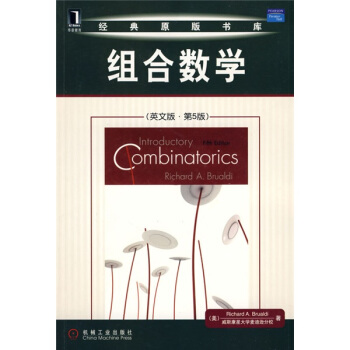

![地理信息係統導論(原著第5版) [Introduction?to?Geographic?Information?Systems] pdf epub mobi 電子書 下載](https://pic.tinynews.org/10003442/687b3551-4c07-435e-b9c1-a46dde7055d0.jpg)

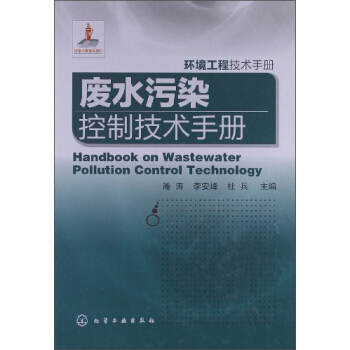
![ε空間 I:實分析(第三年的數學博客選文)(英文版) [An Epsilon of Room,I:Real Analysis(Pages from year three of a Mathematical Blog)] pdf epub mobi 電子書 下載](https://pic.tinynews.org/12118828/58b391f9N68bdcf84.jpg)

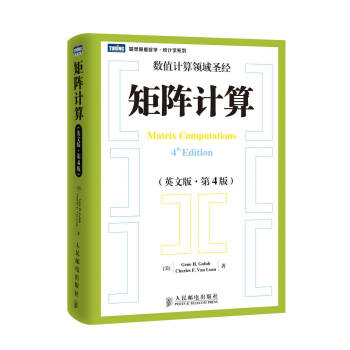
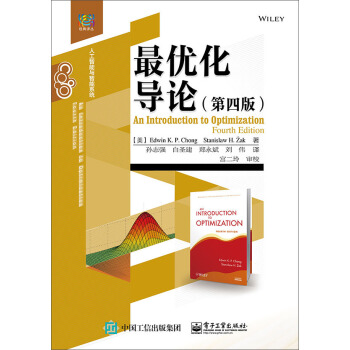
![極小麯麵教程(英文版) [A Course in Minimal Surfaces] pdf epub mobi 電子書 下載](https://pic.tinynews.org/12038119/58b7eec4N7b8317f1.jpg)


